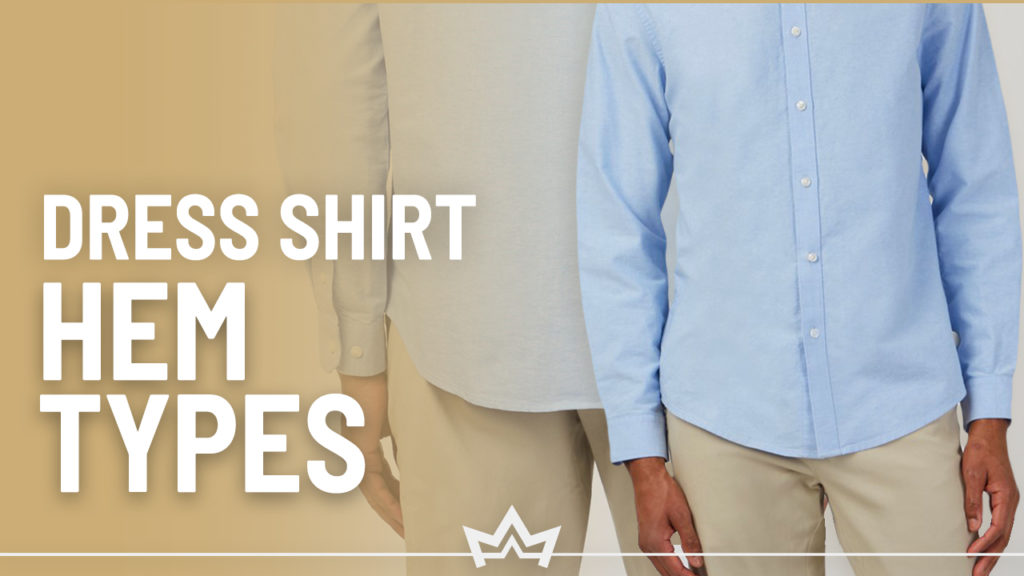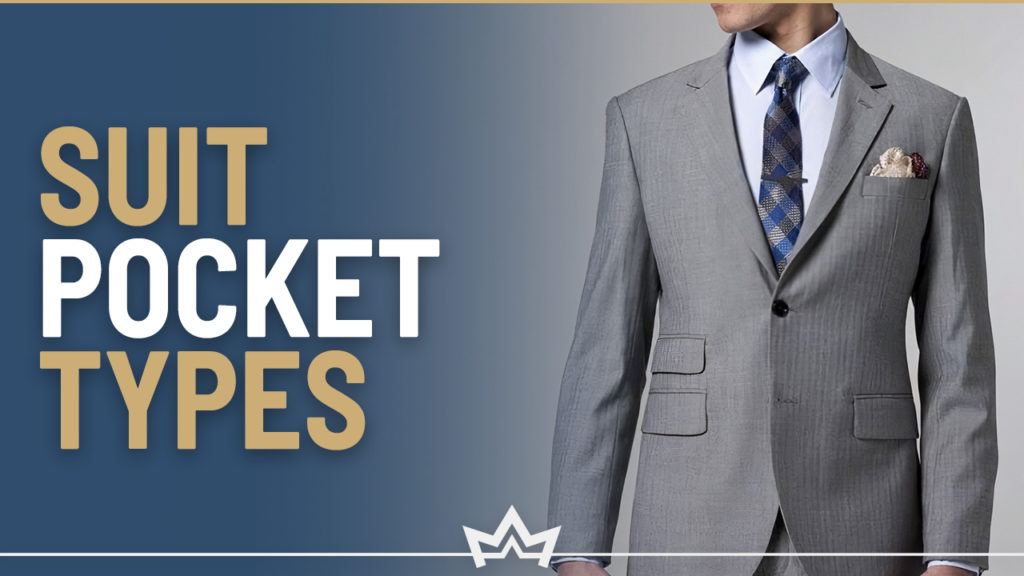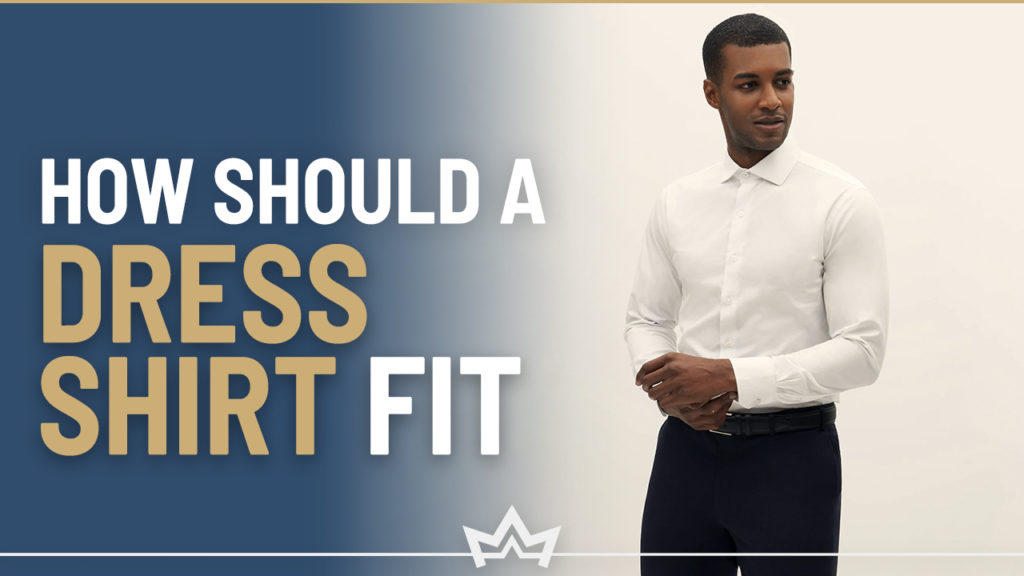Dress shirts can be formal or casual, and the hem is one crucial factor that dictates the shirt’s formality.
It’s also the giveaway of deciding between going tucked-in or untucked.
At first, the dress shirt hem might not seem significant.
But you can’t overlook it once you start noticing it. There could be quite a diversity too.
Different Types of Dress Shirt Hem
In a dress shirt, the hem represents the lower border of the shirt, folded to create a refined bottom contour.

The dress shirt hem can be double-folded, narrowly rolled, blind, tape, or zig-zag.
But generally, the shape dictates the hem type and, ultimately, the formality of the shirt.
The hem doesn’t seem like much of a deal for tucked-in shirts.
But the truth is, it can impact the visual array for tucked-in and untucked dress shirts.
Hence, not only the types but the styling is equally important. By the end of this article, I’ll make sure you master both of these things.
Straight Hem
The straight dress shirt hem is simple; the bottom of the shirt has been cut in a straight line. It also features 2.5″ side seam vents.
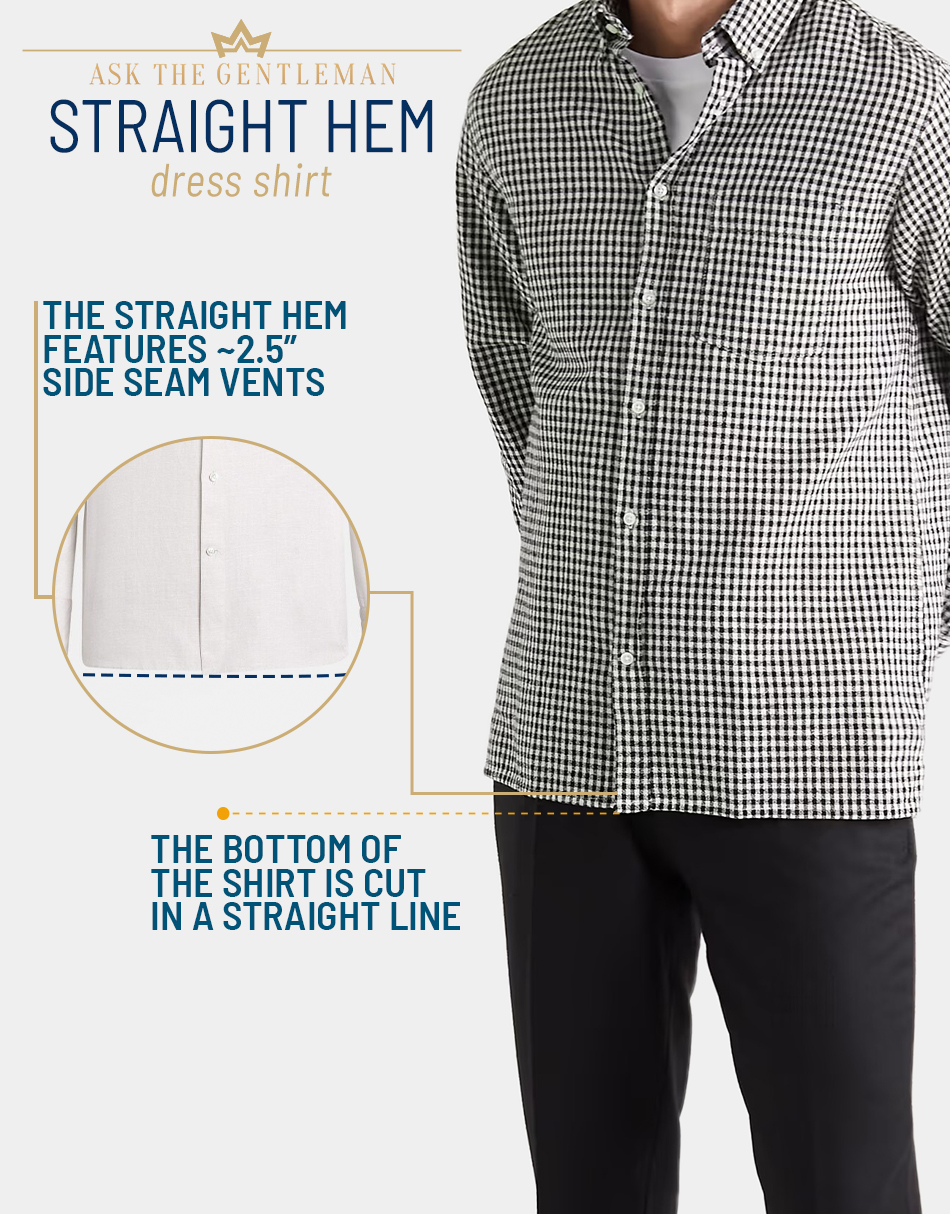
Straight hems are a distinguishing feature of casual shirts. Gingham and other extensive checks almost always feature a straight hem.
Additionally, the straight hem makes the shirt susceptible to wear untucked.
Therefore, effortless styling is important, and wearing the shirt untucked is recommended with a straight hem.
Concurrently the length is important too. It should ideally look proportionate to your body.
Too long or short untucked casual shirts with straight hems look ridiculously mocking.
Some stylists recommend a one-inch decrease from the typical shirt length. However, there is no fixed rule here.
You can go with a shirt length that’s visually appropriate to standards.
The dress shirt fit should also complement the hem’s formality. Everything from the chest to the sleeves must appear relaxed.
The shirt’s bottom width shouldn’t taper as it can look pretty disturbing for an untucked shirt.
Overall, keep things simple, relaxed, and untucked with a straight hem.
Curved Hem
We often see curved or rounded hems with formal dress shirts. The shirt’s bottom is cut in a curve to create the front and back shirt tail.

Also, there is a 2-inch rise from the shirt’s hem to the side seam. Functionally, they keep formal shirts tucked in.
In addition, the shortened side seams account for a good range of movements.
Again, the length will is crucial. Generally, curved hem dress shirts must be longer than their straight hem counterparts.
However, many retailers try to cut the shirt short to reduce the fabric used. You’ll see this thing with many ready-to-wear shirts, which is something you should avoid.
The fit aims to create an “hourglass” appearance. Hence, the shirt should taper towards the waist and legs.
Lastly, shirt styling may vary with the type of shirt.
For most formal shirts, you don’t have the carte blanche of going untucked.
However, you can untuck the shirt if you see a curved hem on a flannel shirt.
The Polo Hem
The Polo hem looks like a straight hem on classic Polo shirts. However, the back length is about an inch longer than the front.
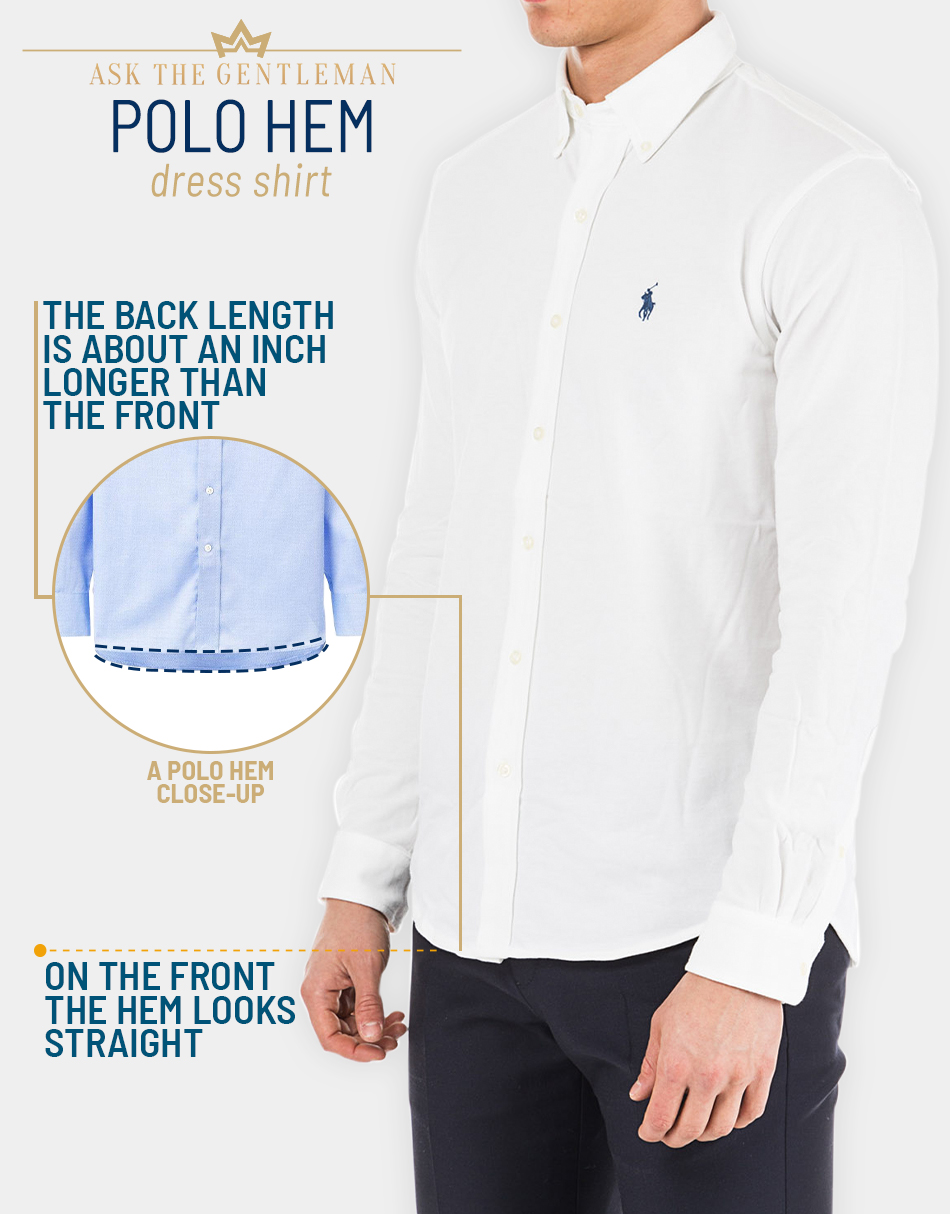
The shirt also features a one-inch side vent, similar to casual shirts.
In addition, the back tail is longer, relating to its history and style.
Traditionally, polo and tennis players used to wear these shirts. Since most require bending forward, a longer back length will better stay tucked.
Therefore, you can treat polo shirts as a versatile wardrobe item and wear them tucked in or untucked.
So, here applies the concept of hybrid length.
The longer back hem will be adequate to cover the butts. At the same time, the slightly shorter front hem remains mid-fly.
When looked at from the side, the shirt looks pretty proportionate with such hems.
Gusset Hem
The gusset is a triangular to rhomboid reinforcing fabric attached to the shirt’s side seam.

So, the hem would appear straight and seems converted from a rounded hem.
Gusset hem provides durability to the shirt, which you see with many custom shirts.
But it’s more of a styling thing now. It’s also a great way to add personality to the shirt.
The gusset fabric may vary with the shirt.
For a sporty t-shirt, a popular option is to have a contrasting fabric that complements the shirt patterns.
When wearing such shirts, it’s better to go untucked and make the hem visible.
A formal dress shirt’s gusset is usually the same fabric as the shirt. Again, going untucked is acceptable; just be careful about the length.
In my opinion, the gusset hem is not often endorsed. In fact, it compromises your movement when tucked in.
Plus, it would make quite a difficult alteration for a tailor if you aim to alter your dress shirt hem.
How the Hem Affects Whether to Tuck or Untuck Dress Shirt
The hem shape is the primary determiner of whether to tuck or untuck your shirt.
Curved or rounded hem shirts are meant to be tucked in.
It’s best if you go untucked with the straight hem.
Gusset and polo hem shirts are adaptable, and you can go either way.
Functionality is also important. That makes length another deciding factor in tucking or untucking dress shirts.
Hem Length for Tucked-In Dress Shirt
The idea behind choosing the proper length for a tuck-in shirt is it should never pop out from the pants.
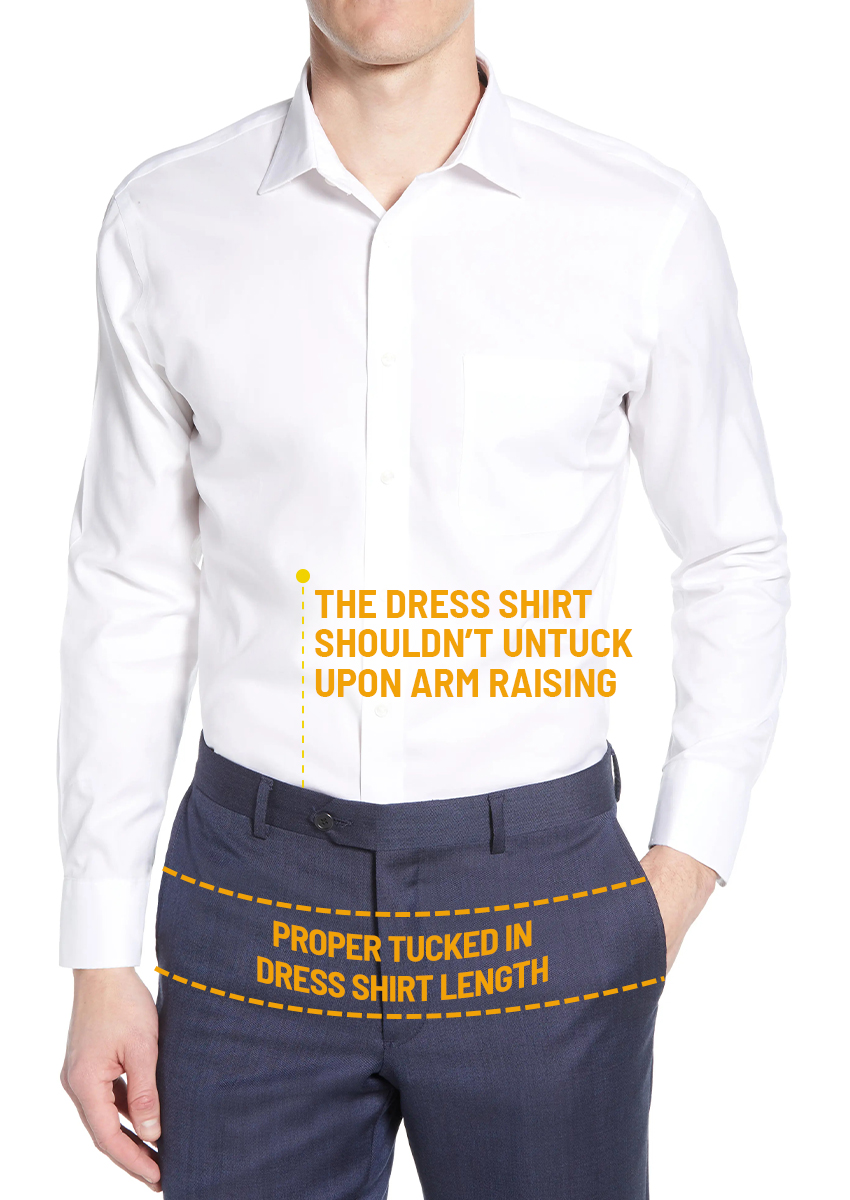
Comfort, which most people ignore for these dress shirts, is equally important.
A perfect tuck-in dress shirt length should entirely cover your rear.
The general rule is that a tuck-in shirt should always have at least 2″ tucked hems around the waist.
The shirt will come out of the pants as you do the movements if it’s shorter in length.
Similarly, longer shirts will pack in your thighs and crotch, making them very uncomfortable to wear.
Another aspect people rarely talk about is how the length should be personalized as per the body type.
For example, gentlemen with long torsos should always go for longer versions than the standard shirt length.
Similarly, fellows with big bellies should have to account for an extra two to three-inch shirt length.
Such circumstances will differ from the masses, and it is best to go for custom measurements.
Hem Length for Untucked Shirt
Proper length is a prerequisite for a clean and well-polished look for a shirt worn untucked.

The length shouldn’t cover your butt and thigh completely. Instead, it should be an inch or two shorter.
The rule for proper length to wear an untucked shirt is that it should end at the pants mid-fly.
Alternatively, the hem could end at the mid of the pants pocket.
Gentlemen inevitably make the mistake of choosing a short length. It’s because the short-untucked shirts can look flattering.
But at the time, you’re prone to show your undershirt as you do the movements.
How to Hem Dress Shirt Yourself
Hemming can usually be done for two reasons.
The first is to create a finished border to prevent disentangling of the fabric. The second is to adjust the length of the dress shirt.
Before starting the process, make sure the shirt is ironed and cleaned. It’s best if you try hemming on a cheap shirt first.
To start, flip the shirt inside out and measure the length you want to hem. After that, carefully create the new stitch line using pins.
Then sew along the new stitch line and cut away the excess fabric.
Hemming time depends on the availability of a sewing machine; a few hours are usually enough.
Finally, iron the shirt to keep it crisp, and the shirt is hemmed.

